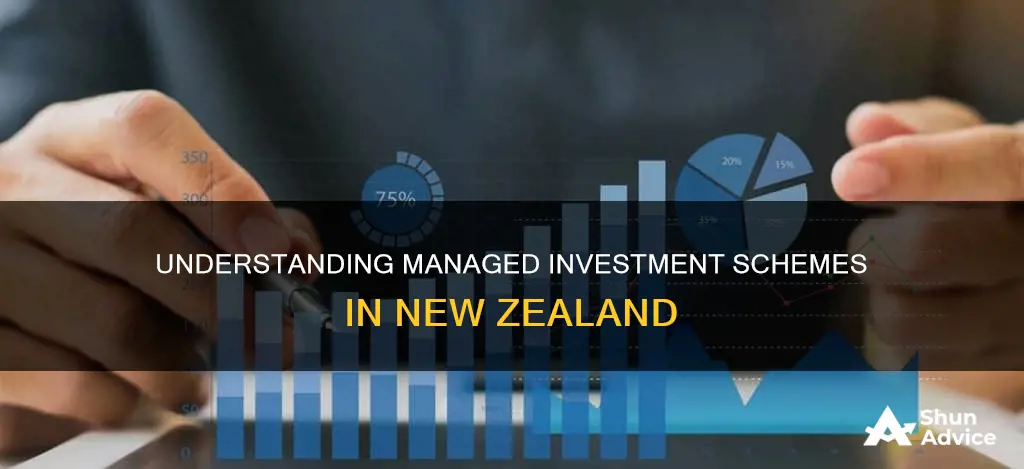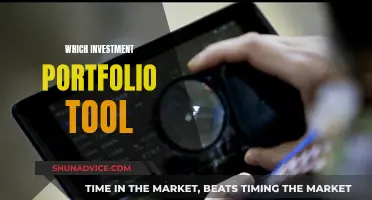
A managed investment scheme (MIS) pools money from multiple investors who rely on the investment expertise of the MIS manager. The definition of an MIS in the FMC Act (section 9) is broad and includes a wide range of collective investment schemes. These schemes can be structured in different ways and may invest in a wide range of assets, including property, shares, bonds, and cash, both in New Zealand and overseas. MISs can be open-ended or close-ended. Open-ended schemes are offered continuously, while close-ended schemes have a fixed number of managed investment products.
In New Zealand, managed funds are a popular choice for investors who want to outsource the management of their investments to experts. These funds enable investors to access different types of assets without needing extensive knowledge about investing. When investing in a managed fund, an individual's money is combined with that of other investors and spread across various kinds of investments. Each investor owns a proportion of the total fund and can choose to invest in a single fund or a mix of funds.
What You'll Learn

What is a managed investment scheme?
A managed investment scheme (MIS) pools money from multiple investors who rely on the investment expertise of the MIS manager. The definition of an MIS in the FMC Act (section 9) is broad and includes a wide range of collective investment schemes. These schemes can be structured in different ways and may invest in a wide range of assets, including property, shares, bonds, and cash, both in New Zealand and overseas. MISs can be open-ended (offered continuously) or close-ended (a fixed number of managed investment products).
Open-ended schemes include open-ended unitised trusts and other schemes that invest in relatively liquid assets (including KiwiSaver, superannuation, and workplace savings schemes). These are generally known as managed fund MIS.
Close-ended schemes include forestry partnerships and property syndicates that invest in a single asset class. These are generally known as 'other MIS'.
A restricted scheme is a type of MIS with restricted membership or closed to new members. All restricted schemes must have a licensed independent trustee, but they do not require a licensed manager or supervisor. No new restricted schemes can be registered.
Under the FMC Act, the manager of a registered MIS, excluding restricted schemes, must be licensed and must have a licensed supervisor. An MIS manager manages the portfolio and investment strategy for the scheme and can be either active or passive, depending on whether they make their own investment decisions or follow a market index. They may provide investment services to wholesale or retail clients.
Savings and Investment Spending: Friends or Foes?
You may want to see also

How does a managed investment scheme work?
A managed investment scheme (MIS) pools money from multiple investors who rely on the expertise of the MIS manager to make investment decisions. The definition of an MIS in the FMC Act (section 9) is broad and includes a wide range of collective investment schemes. These schemes can be structured in different ways and may invest in a diverse range of assets, including property, shares, bonds, and cash, both in New Zealand and overseas. MIS can be open-ended or close-ended. Open-ended schemes are offered continuously and include open-ended unit trusts, KiwiSaver, superannuation, and workplace savings schemes, typically known as managed fund MIS. On the other hand, close-ended schemes have a fixed number of managed investment products, such as forestry partnerships and property syndicates that invest in a single asset class, known as 'other MIS'.
When you invest in an MIS, your money is combined with that of other investors and spread across different types of investments. The MIS manager chooses how the fund is invested according to the rules set out for each fund, and each investor owns a proportion of the total fund. You can choose to invest in a single fund or diversify across multiple funds. MIS are a popular choice for investors who want to outsource the management of their investments to qualified experts. These managers may either be active, making their own investment decisions, or passive, following a market index.
Before investing, it is essential to understand the risks involved. While managed funds are regulated investments, with the fund manager and supervisor licensed and monitored by the FMA, there are still risks to consider. The level of risk depends on the types of assets the fund invests in. Funds with more growth assets, such as property and shares, tend to be more volatile, while those with a higher proportion of income assets like cash and bonds are generally less risky and have more stable returns. Additionally, some managed funds may have restrictions on when you can sell your units, and funds operated from overseas may carry tax or currency risks.
Fees are another important consideration when investing in an MIS. Management fees, performance-based fees, administration charges, and financial adviser fees can significantly impact your total returns over time. It is recommended to compare fees from multiple managers before investing.
Highlighting Investment Portfolio on Resume: Pros and Cons
You may want to see also

What are the risks of a managed investment scheme?
A managed investment scheme (MIS) pools money from multiple investors who rely on the investment expertise of the MIS manager. The manager may either be active or passive depending on their approach to making investment decisions or following a market index. While MISs can be a great way to access a wider range of assets, there are some risks involved.
Firstly, there is the risk of misleading advertising of investment products. It is important to do your own research and understand the different types of managed funds available, such as unlisted managed funds, exchange-traded funds (ETFs), and hedge funds. Comparing the long-term performance, fees, and risks of different funds is essential.
Secondly, the performance of an MIS may not always meet your expectations. It is important to remember that past performance does not guarantee future results, and even experienced fund managers can make poor investment decisions. Diversifying your investments across different fund managers and asset classes can help lower this risk.
Thirdly, liquidity issues may arise, especially with close-ended MISs, which have a fixed number of managed investment products. In such cases, investors may find it difficult to exit their investments before the fund matures.
Additionally, operational and technological risks can impact an MIS. For example, if the MIS manager fails to maintain robust technology systems, it could lead to disruptions in investment activities and potentially result in financial losses.
Lastly, there is always the risk of unforeseen events and market volatility affecting the performance of an MIS. This could include economic downturns, natural disasters, or other black swan events that are difficult to predict and mitigate.
It is important for investors to carefully consider their risk tolerance and conduct thorough due diligence before investing in any managed investment scheme. Understanding the specific risks associated with a particular MIS and implementing appropriate risk management strategies can help mitigate potential losses.
What's the Deal? Investment Managers and Broker-Dealers Explained
You may want to see also

How to choose a managed investment scheme?
Managed investment schemes (MIS) pool money from multiple investors, who rely on the investment expertise of the MIS manager. The manager of the MIS makes investment decisions on behalf of the investors, and the investors own 'units' in the fund or 'shares' in the CCIV (Corporate Collective Investment Vehicle).
Types of Funds
There are thousands of managed funds to choose from, so it's important to understand the different types of funds, their risks, and potential returns. Some common types of funds include:
- Single-asset funds: These invest in a single class of assets, such as shares, property, or bonds.
- Fixed-interest or bond funds: These invest in low-risk investments like government bonds and bank bills.
- Property funds: These invest in residential, commercial, or development property.
- Share (equity) funds: These invest in listed companies in Australia or overseas and offer higher potential returns but with higher risk.
- Alternative investment funds: These include hedge funds, private equity, derivatives, and commodities, and they are typically high risk.
Long-term Returns
Consider the fund's performance over 5 to 10 years to get a better indication of how it will perform in the future. Compare the returns against an index fund or similar funds to see if it's keeping pace with the market and competing funds.
Risk Level
Each managed fund has different risks based on the assets they invest in. Understand the risk level of the fund and ensure it aligns with your risk tolerance and investment goals. Some funds may use misleading names like 'low risk' or 'capital protected', so it's important to look beyond the labels and carefully review the Product Disclosure Statement (PDS).
Fees
Managed funds charge various fees, including establishment fees, contribution fees, management fees, performance fees, and adviser service fees. Small differences in fees can significantly impact your returns, so it's important to understand the cost structure before investing. You may also be able to negotiate fees with the fund manager or your adviser.
Withdrawing Your Investment
Consider the fund's policies and restrictions on withdrawing your money. Some funds may have time restrictions or freeze withdrawals during certain market conditions. Understand your withdrawal rights and options, especially if you need access to your funds in the short term.
Rebalancing Your Investment Portfolio: How Often is Necessary?
You may want to see also

How to manage your investment?
How to Manage Your Investment
Step 1: Understand the Basics
Before investing in a managed investment scheme (MIS), it's important to understand what it is and how it works. An MIS pools money from multiple investors, who then rely on the expertise of an MIS manager to invest their funds. These schemes can be structured in different ways and may invest in various assets, such as property, shares, bonds, and cash. They can also be open-ended or close-ended.
Step 2: Choose the Right Scheme
Not all MIS are created equal. It's important to research and compare different schemes to find one that aligns with your investment goals and risk tolerance. Consider factors such as the types of assets the scheme invests in, its historical performance, and the fees associated with the scheme.
Step 3: Due Diligence on the MIS Manager
The success of your investment often depends on the expertise and performance of the MIS manager. Look into their track record, investment strategy, and whether they have a licensed supervisor. You can also set up a meeting with the Financial Markets Authority (FMA) to better understand their business model and address any gaps in your understanding.
Step 4: Understand the Risks and Regulations
Investing always carries risks, and it's important to be aware of them before committing your funds. Understand the specific risks associated with the type of MIS you're considering, as well as the regulatory framework that governs MIS in New Zealand, such as the Financial Markets Conduct Act (FMC Act).
Step 5: Monitor Your Investment
Once you've made your investment, stay involved by regularly reviewing performance reports, fund updates, and any other relevant information. Keep an eye out for any material changes in the scheme's circumstances and ensure that the MIS manager is acting in your best interests as an investor.
Step 6: Seek Professional Advice
Consider working with a licensed financial adviser who can provide personalised guidance based on your financial situation and goals. They can help you navigate the complexities of investing, including understanding the risks, fees, and potential returns associated with different MIS.
Savings and Investments: Two Sides of the Same Coin
You may want to see also
Frequently asked questions
A managed investment scheme (MIS) pools money from multiple investors who rely on the investment expertise of the MIS manager. The manager makes investment decisions on behalf of the investors, who each own a proportion of the total fund.
Examples of MIS include KiwiSaver schemes, unit trusts, and superannuation.
Managed investment schemes are a popular choice for investors who want to outsource the management of their investments to experts. They allow investors to access a wide range of assets, including property, shares, bonds, and cash, both in New Zealand and overseas.
To invest in an MIS, you need to review the Product Disclosure Statement (PDS), which provides information about the asset mix, fund manager's experience, risk indicator, and specific risks associated with the fund. You can then select a fund that aligns with your investment goals, risk tolerance, and preferred asset types.
While managed investment schemes are regulated, there are still risks to consider. These include the volatility of growth assets, potential difficulties in accessing your money, and tax or currency risks for overseas funds.







